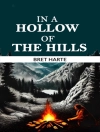In ‘Hidden Water, ‘ Dane Coolidge masterfully weaves a tale that explores the intricate relationship between humans and nature in the untamed landscapes of the American West. Written in the early 20th century, the novel showcases Coolidge’s lyrical prose, blending rich descriptions with vivid characterizations that transport readers to the heart of the Sierra Nevada mountains. The narrative unfolds against a backdrop of shifting social dynamics, encapsulating themes of friendship, survival, and the quest for identity, compelling readers to reflect on their own connections to the natural world. Dane Coolidge, an author and playwright born in 1873, was profoundly influenced by his experiences in the West, which shaped his understanding of its complex ecosystems and indigenous cultures. His background in journalism and his passion for the great outdoors informed his storytelling, allowing him to intertwine factual elements with fictional narratives. This deep-rooted appreciation for nature is evident throughout ‘Hidden Water, ‘ reflecting Coolidge’s belief in the necessity of preserving the environment for future generations. ‘Hidden Water’ is a recommended read for enthusiasts of classic American literature and nature-oriented narratives. With its engaging plot and thought-provoking themes, this novel not only entertains but also serves as a poignant reminder of humanity’s place in the larger tapestry of life, making it an essential addition to any literary collection.
About the author
Dane Coolidge was an American writer and naturalist known for his contributions to Western fiction, a genre that celebrates the unique culture, geography, and spirit of the American West. Born on March 24, 1873, in Natick, Massachusetts, he went on to author over 30 books during the early to mid-20th century. One of his notable works, ‘Hidden Water’ (1910), exemplifies his literary prowess in portraying the raw and rugged landscapes intertwined with human drama and adventure. Coolidge’s writing style is characterized by its vivid descriptive narrative and an acute attention to the intricate details of the environment and regional vernacular, which has earned him a place among the noteworthy authors of Western tales (Coolidge, D. (1910). Hidden Water. New York: Grosset & Dunlap). His body of work includes both fiction and non-fiction, with a significant contribution to understanding the animal life and ethnography of the Southwest. Coolidge’s eloquent representation of the old West, including its people, their lifestyles, and the struggles they faced, has immortalized his name among enthusiasts of Western American literature. Besides ‘Hidden Water’, Dane Coolidge’s legacy is sustained through other works such as ‘The Texican’ (1911) and ‘The Fighting Fool’ (1924), both of which further showcase his mastery in Western literary creation.












